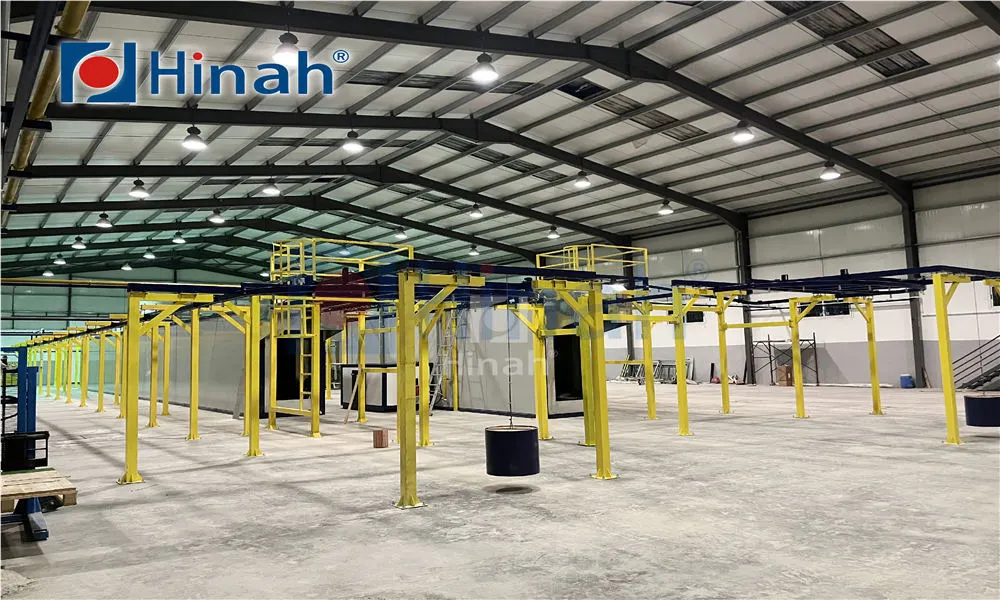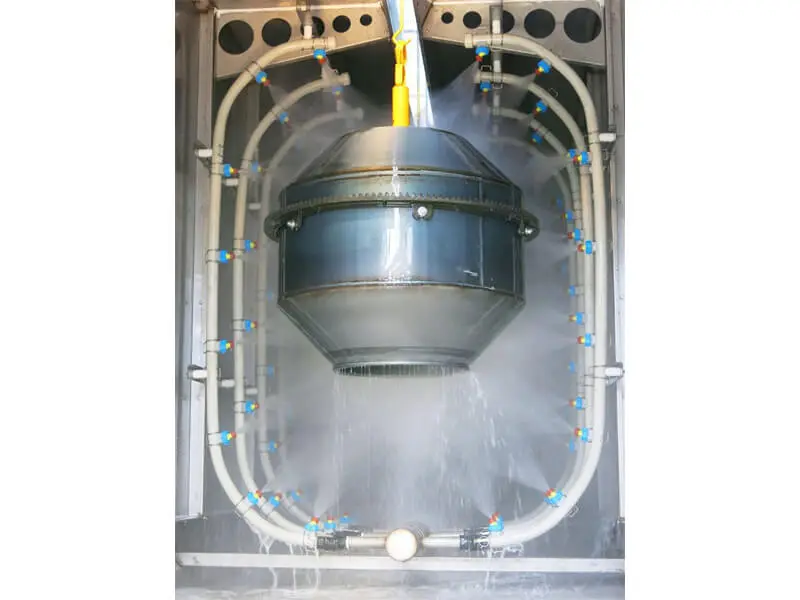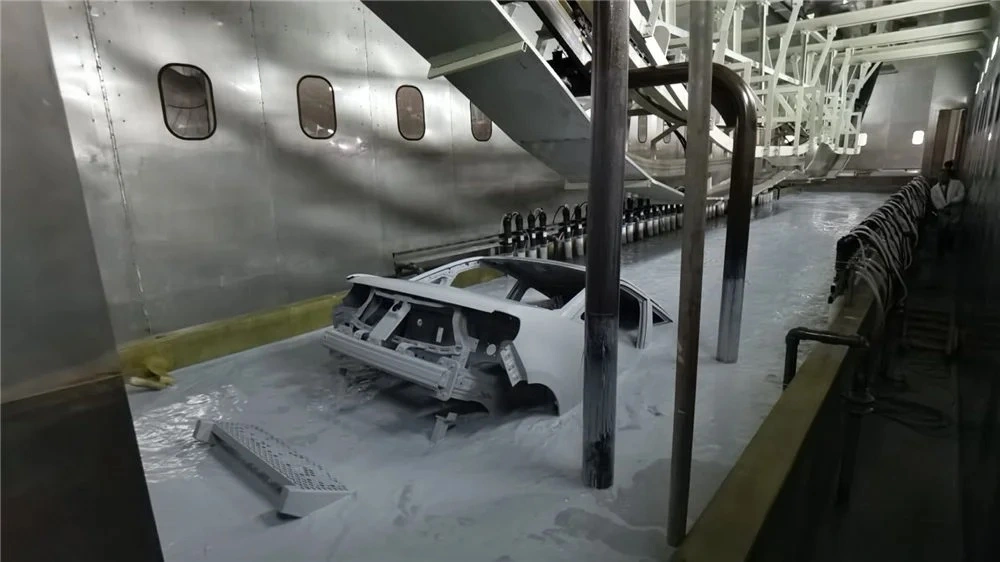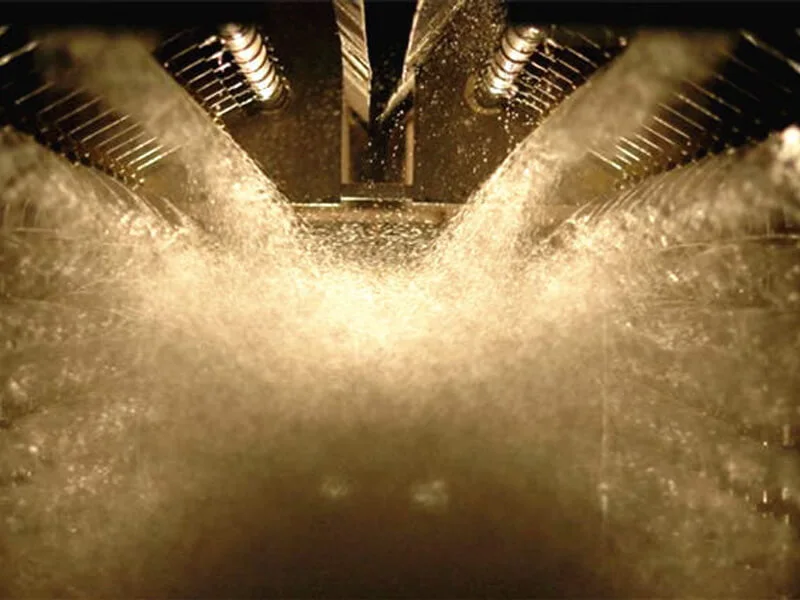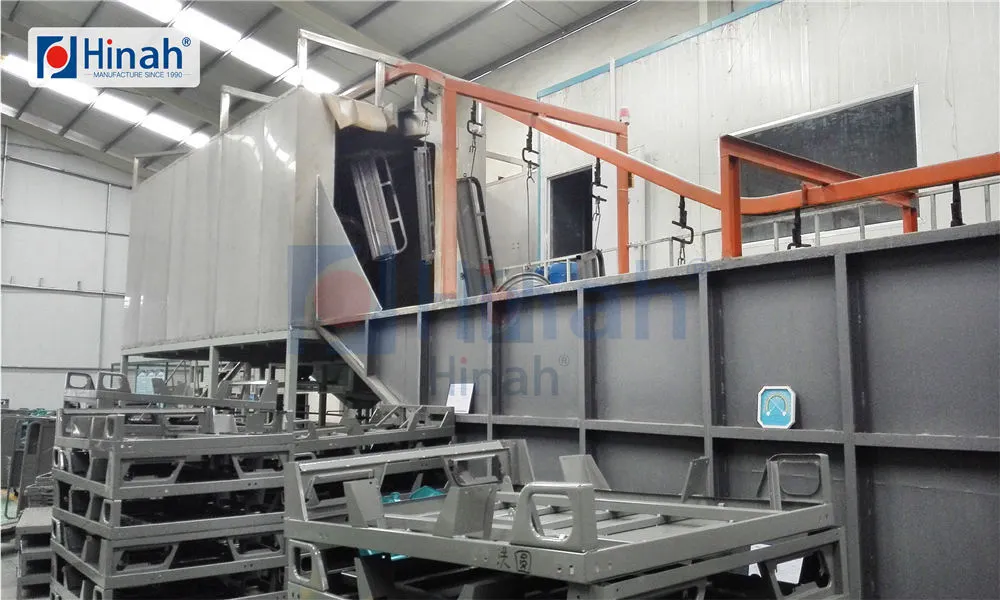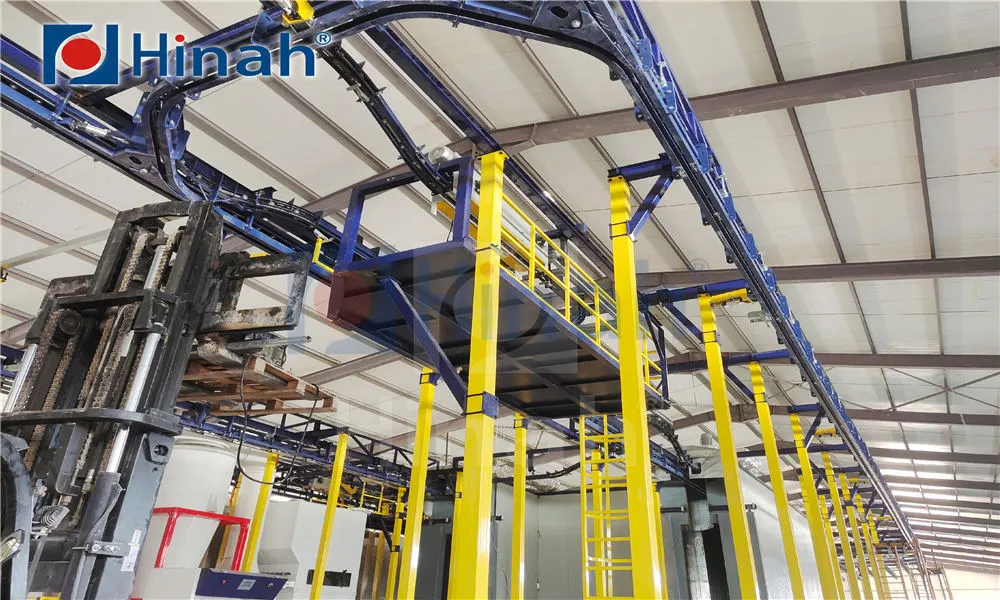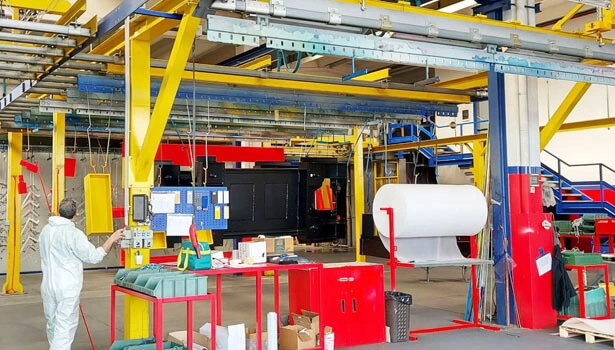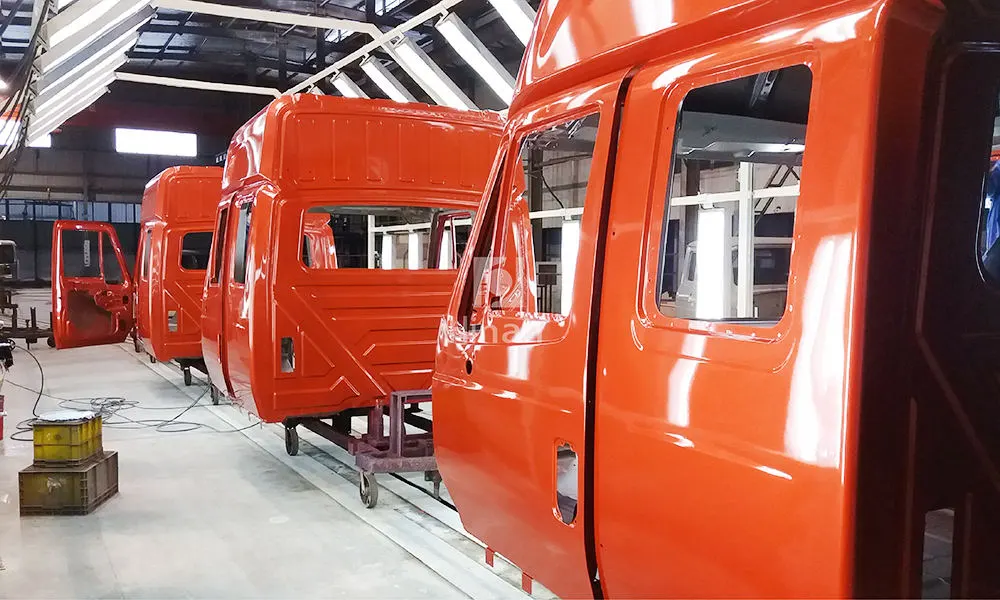You want your finishing process to deliver consistent, high-quality results. Paint drying ovens play a crucial role in achieving that goal. When you understand the critical factors that drive oven performance, you unlock greater efficiency and reliability. Hanna brings more than 30 years of expertise to industrial finishing and powder coating. Their advanced solutions help you meet demanding production standards. Take time to review your current setup and look for ways to improve your results.

Key Takeaways
- Precise temperature control is essential for consistent paint drying. Monitor oven temperature throughout the drying cycle to ensure quality finishes.
- Proper airflow is crucial for even drying. Regularly inspect airflow paths to prevent blockages and maintain uniform drying.
- Choose ovens with strong insulation to improve energy efficiency. High-quality insulation reduces fuel costs and maintains stable temperatures.
- Regular maintenance extends the lifespan of your oven. Follow a routine schedule for cleaning and inspections to keep your oven running smoothly.
- Select customizable oven solutions to meet your specific production needs. This flexibility helps you achieve high-quality finishes and adapt to different coatings.
Temperature Control
Precision Matters
You need precise temperature control to achieve consistent results in paint drying ovens. Temperature accuracy affects the quality of your finish and the reliability of your process. If the temperature fluctuates, you risk uneven drying, poor adhesion, and defects in the coating. Gradual increases in baking temperature help prevent thermal shock. Uniform heating and air circulation ensure every part of your product dries evenly. When you verify dryness after baking, you confirm that no moisture remains, which protects the integrity of your finish.
Tip: Always monitor oven temperature throughout the drying cycle to maintain process stability.
Control Features
Modern paint drying ovens use advanced control systems to deliver accuracy and reliability. Hanna’s ovens feature state-of-the-art controllers that maintain exact temperatures and optimize heat zone uniformity. These systems support a highly uniform thermal environment, which is essential for demanding industrial applications. You benefit from robust safety features, such as thermal cut-off switches and overheat sensors, that protect your equipment and ensure consistent operation.
| Feature | Benefit |
|---|
| Precision temperature control | Stable process, improved finish quality |
| Uniform heat distribution | Even drying, reduced defects |
| Safety mechanisms | Equipment protection, reliable performance |
| Customizable settings | Flexibility for diverse production needs |
Optimization Tips
You can optimize your paint drying ovens by following best practices. Use high-quality heating elements to reduce downtime and improve reliability. Choose ovens with strong warranty coverage and responsive technical support. Regularly check for uniform heating and proper air circulation. Comprehensive support from your manufacturer, like Hanna, increases your confidence and satisfaction. When you balance temperature control with energy efficiency, you maximize output and minimize waste.
- Switch to high-quality heating elements for better reliability.
- Ensure strong warranty and technical support for peace of mind.
- Monitor air circulation and temperature for consistent results.
Airflow in Paint Drying Ovens
Circulation Basics
You need proper airflow to achieve even drying and high-quality finishes in paint drying ovens. Air moves heat across every surface, helping paint cure consistently. If airflow is weak or uneven, you may see spots that dry too slowly or too quickly. This can lead to defects and wasted materials. You should check that fans and ducts work well and that air reaches all areas inside the oven. Good circulation keeps temperatures steady and supports reliable results.
Tip: Regularly inspect airflow paths to prevent blockages and ensure uniform drying.
Airflow Design
The design of airflow systems in paint drying ovens affects both drying time and energy use. When you have balanced pressure, doors close tightly and air stays inside. If pressure is uneven, control systems cycle more often, which increases energy costs. Leaks can also waste energy and slow down production. Hanna customizes airflow systems to fit your plant’s needs. Their engineers use advanced layouts and monitoring tools to keep air moving efficiently. You benefit from a system that dries paint quickly and saves energy.
| Aspect | Impact on Energy Consumption |
|---|
| Pressure Imbalances | Cause excess cycling in control systems, leading to higher energy costs. |
| Door Operation Issues | Pressure imbalances can prevent doors from closing properly, resulting in air loss and increased energy use. |
| Leak Detection | Long-term pressure monitoring can identify leaks, improving system efficiency and reducing energy costs over time. |
Best Practices
You can improve oven performance by following best practices for airflow management. Clean filters and ducts often to keep air moving freely. Use sensors to monitor pressure and spot leaks early. Adjust fan speeds to match your production needs. Hanna’s team can help you set up custom airflow solutions for any type of paint or substrate. When you focus on airflow, you get better finishes, faster drying, and lower energy bills.
Oven Design
Structure
You need a solid oven structure to support reliable performance in your finishing process. The frame and panels must withstand high temperatures and frequent use. A well-built oven keeps heat inside and prevents energy loss. You should look for doors that seal tightly and hinges that operate smoothly. The layout of your oven affects how easily you can load and unload parts. Hanna designs paint drying ovens with robust frames and user-friendly layouts. This approach helps you maintain consistent production and reduces downtime.
Insulation
Insulation plays a key role in energy efficiency and temperature stability. You want materials that trap heat and keep the oven’s temperature steady. The right insulation reduces fuel costs and protects your workspace from excess heat. Common insulation materials include:
- Ceramic fiber: Traps heat and reduces thermal loss.
- High-density rock wool panels: Maintain stable temperatures and lower fuel consumption.
- Advanced materials like tungsten, silicon carbide, and molybdenum disilicide: Improve energy efficiency and ensure even heat distribution.
When you choose ovens with high-quality insulation, you get better results and save on energy bills.
Customization
Customizable oven solutions help you meet unique production needs and integrate new technology into your plant. Hanna’s Powder Coating Plant offers flexible options that fit your workflow. You can select features that boost efficiency and quality. The table below highlights key benefits of customizable ovens:
| Feature | Description |
|---|
| Modular Design | Supports flexibility for different workpieces and production changes. |
| Multi-Zone Temperature Control | Ensures optimal curing for various coatings. |
| Compatibility with Coatings | Handles different thermosetting powder coatings for efficient operations. |
| High-Speed Operation | Increases production speed and minimizes downtime. |
| Consistent Coating Quality | Delivers uniform powder application for top-quality finishes. |
| Eco-Friendly | Reduces waste and emissions with powder recovery features. |
You may face challenges when adding new ovens to your existing plant. These can include high initial costs, integration with older equipment, and the need for workforce training. Planning ahead and working with experts like Hanna helps you overcome these obstacles and achieve smooth integration.
Energy Efficiency
Saving Technologies
You want your paint drying oven to deliver top performance while keeping energy costs low. Modern ovens use advanced technologies to help you achieve this goal. Forced convection drying ovens have become popular because they move air efficiently and reduce energy usage. You also see industrial infrared curing ovens making a difference. These ovens use far-infrared wavelengths between 2 and 15μm. This technology cures coatings up to 50% faster than older methods and cuts energy consumption by 30-40%. When you choose ovens with these features, you save money and boost productivity.
- Forced convection systems improve airflow and lower energy use.
- Far-infrared curing ovens speed up drying and reduce power consumption.
- Smart controls help you adjust settings for maximum efficiency.
Hanna’s Powder Coating Plant uses these innovations to help you minimize powder waste and energy costs. Their systems combine high-performance heating with precise control, so you get reliable results and lower utility bills.
Monitoring Use
You need to track energy use to keep your operation efficient. Real-time energy monitoring lets you see how much power your oven uses during each cycle. This data helps you spot peak demand times and adjust your production schedule. When you monitor energy use, you can find areas where you waste power and fix them quickly. Targeted maintenance based on real-time data keeps your oven running smoothly and reduces your environmental impact.
Tip: Use energy monitoring software to identify trends and plan maintenance before problems arise.
Balancing Output
You must balance energy efficiency with production output. If you run your oven at lower temperatures to save energy, you risk slower drying and reduced throughput. On the other hand, pushing for maximum speed can drive up energy costs. Hanna’s customizable ovens let you fine-tune settings for your specific needs. You can adjust temperature zones, airflow rates, and curing times to match your workload. This flexibility helps you maintain high-quality finishes while controlling energy expenses.
| Strategy | Benefit |
|---|
| Adjust temperature zones | Optimize drying and save energy |
| Monitor airflow rates | Improve efficiency |
| Schedule production | Reduce peak energy demand |
You get the best results when you combine smart technology, real-time monitoring, and flexible controls. Hanna’s solutions make it easy to balance efficiency and output for your finishing process.
Maintenance
Routine Tasks
You keep your paint drying oven running smoothly by following a regular maintenance schedule. Daily cleaning of the oven’s interior, racks, and gaskets prevents buildup and ensures consistent performance. Weekly tasks include cleaning fan blades, heating elements, and performing a deep interior clean. Every quarter, you should calibrate the control system to maintain temperature accuracy. Annual professional service helps catch issues before they become costly problems. Replace gaskets and heating elements as needed to avoid unexpected downtime.
| Task | Frequency |
|---|
| Interior cleaning | Daily |
| Rack/guide cleaning | Daily |
| Gasket inspection | Daily |
| Fan blade cleaning | Weekly |
| Element cleaning | Weekly |
| Deep interior clean | Weekly |
| Control calibration | Quarterly |
| Professional service | Annual |
| Gasket replacement | As needed |
| Element replacement | As needed |
Tip: Consistent maintenance extends the lifespan of your oven and protects your investment.
Troubleshooting
You may encounter issues that disrupt oven performance. Uneven drying often results from improper loading or blocked airflow. Temperature inconsistencies can stem from faulty sensors or worn gaskets. Problems with the fan motor may affect air circulation, while control system errors usually display as error codes. Address these issues quickly to prevent production delays.
- Uneven drying from improper loading
- Temperature swings from sensor or gasket problems
- Airflow issues due to fan motor faults
- Error codes from control system glitches
Regular inspections help you catch these problems early. Quick action keeps your operation on track.
Support
You benefit from strong manufacturer support when you choose Hanna. Fast response times for repairs minimize interruptions and protect your workflow. Factory-trained technicians bring specialized knowledge, handling model-specific issues with confidence. Planned maintenance strategies and preventative care reduce unplanned downtime and extend the life of your equipment. Reliable support ensures your oven operates at peak performance, so you can focus on delivering quality finishes every time.
| Benefit | Description |
|---|
| Fast repair response | Reduces service interruptions and keeps production moving |
| High equipment uptime | Lowers costs from lost orders or delays |
| Specialized technician support | Ensures effective, model-specific repairs |
| Preventative maintenance plans | Identifies issues early and extends equipment lifespan |
Note: Hanna’s expert service team stands ready to support your operation, helping you achieve reliable, efficient results year-round.
Material Compatibility
Paint and Substrate
You need to match oven settings to the specific paint and substrate you use. Each paint type—whether solvent-based, water-based, or powder—requires a unique temperature and curing time. Metal substrates like steel or aluminum absorb and retain heat differently. If you use the wrong settings, you risk poor adhesion, bubbling, or uneven finishes. Always check the manufacturer’s recommendations for both paint and substrate. Adjust oven temperature and dwell time to suit the material. This approach helps you achieve a durable, high-quality finish every time.
Tip: Test a small batch before full production to confirm the settings work for your specific combination of paint and substrate.
Coating Types
You encounter many coating types in industrial finishing. Powder coatings, liquid paints, and specialty finishes each have their own curing profiles. Some coatings need rapid heating, while others require a slow, controlled ramp-up. You must set your oven to match these requirements. Flexible oven solutions, like those from Hanna, allow you to adjust temperature zones and airflow for different coatings. This adaptability supports a wide range of applications, from automotive parts to architectural panels.
| Benefit | Description |
|---|
| Flexibility | Batch ovens process materials in discrete loads, allowing for tailored heating and curing. |
| Adaptability | Suitable for industries from aerospace to food processing, providing repeatable results. |
| Energy Efficiency | Insulated walls and optimized airflow reduce energy waste. |
| Automation | PLCs and remote monitoring minimize manual intervention and boost productivity. |
Consistency
You want every part to meet the same high standard. Consistency in curing ensures that your finishes look uniform and perform as expected. Use ovens with advanced control systems to maintain steady temperatures and airflow. Hanna’s customizable solutions help you achieve this level of consistency, even when you switch between different paints or substrates. Automated features and real-time monitoring let you make quick adjustments, so you always deliver reliable results.
Note: Consistent oven performance leads to fewer rejects, less rework, and higher customer satisfaction.
Oven Technology Choices
Infrared vs. Convection
You face a key decision when choosing between infrared and convection ovens for your paint drying process. Each technology offers unique benefits for drying efficiency and finish quality. Infrared ovens use direct radiant heat, which targets the surface of your parts. This method speeds up drying by up to 50% compared to traditional systems. You also benefit from lower energy consumption and reduced risk of contamination because infrared ovens move less air.
Convection ovens, on the other hand, rely on circulating hot air. This approach ensures even heat distribution and precise temperature control. You can achieve consistent results, but convection ovens may use more energy and take longer to dry coatings.
| Feature | Infrared Ovens | Convection Ovens |
|---|
| Drying Speed | Up to 50% faster | About 25% faster than traditional |
| Heat Source | Direct radiant heat | Circulating hot air |
| Temperature Control | Excellent at lower temperatures | Precise, crucial for consistency |
| Contamination Risk | Reduced (minimal air movement) | Higher (more air movement) |
| Energy Consumption | Lower | Higher |
Tip: Choose the oven type that matches your production speed and finish quality requirements.
Data Profiling
You can improve your paint drying process by using data profiling tools. These tools track temperature, humidity, and airflow in real time. You gain insights into how your oven performs during each cycle. By analyzing this data, you can adjust settings to optimize drying times and reduce defects. Hanna’s advanced control systems support data profiling, helping you maintain consistent quality and spot issues before they affect your output.
Manufacturer Selection
Selecting the right manufacturer ensures your oven delivers reliable performance and long-term value. You should:
- Review the heating technology to confirm it fits your process.
- Assess your production needs to match oven capacity and features.
- Evaluate maintenance requirements for smooth operation.
- Conduct a cost analysis to align with your budget.
Hanna stands out by offering customizable solutions, expert support, and proven technology. You gain peace of mind knowing your oven will meet your operational goals and adapt as your needs evolve.
You achieve optimal paint drying oven performance when you master temperature control, airflow, oven design, energy efficiency, maintenance, material compatibility, and technology choices. Intelligent control systems and real-time monitoring help you maintain efficiency and consistent quality. Regular evaluation and adaptation keep your process ahead of industry standards. Consider Hanna’s customizable solutions to support your finishing needs.
Tip: Review your oven setup often and embrace new technologies to ensure reliable, high-quality results.
FAQ
What is the ideal temperature range for most paint drying ovens?
You should set most paint drying ovens between 300°F and 400°F. Always check your paint and substrate specifications. This range supports proper curing and finish quality for many industrial coatings.
How often should you perform maintenance on your oven?
You should clean and inspect your oven daily. Schedule deeper cleaning and calibration every week. Plan for professional service at least once a year. Regular maintenance keeps your oven running efficiently and extends its lifespan.
Can you use the same oven for different types of coatings?
Yes, you can use a single oven for various coatings if it offers adjustable temperature zones and airflow. Hanna’s customizable ovens support quick changes between powder, liquid, and specialty coatings.
Tip: Always test settings before switching to full production.
What are the main benefits of choosing a customizable oven solution?
- You match your oven to your production needs.
- You improve energy efficiency.
- You achieve consistent, high-quality finishes.
- You integrate new technology easily.
Customizable ovens from Hanna help you adapt as your business grows.


